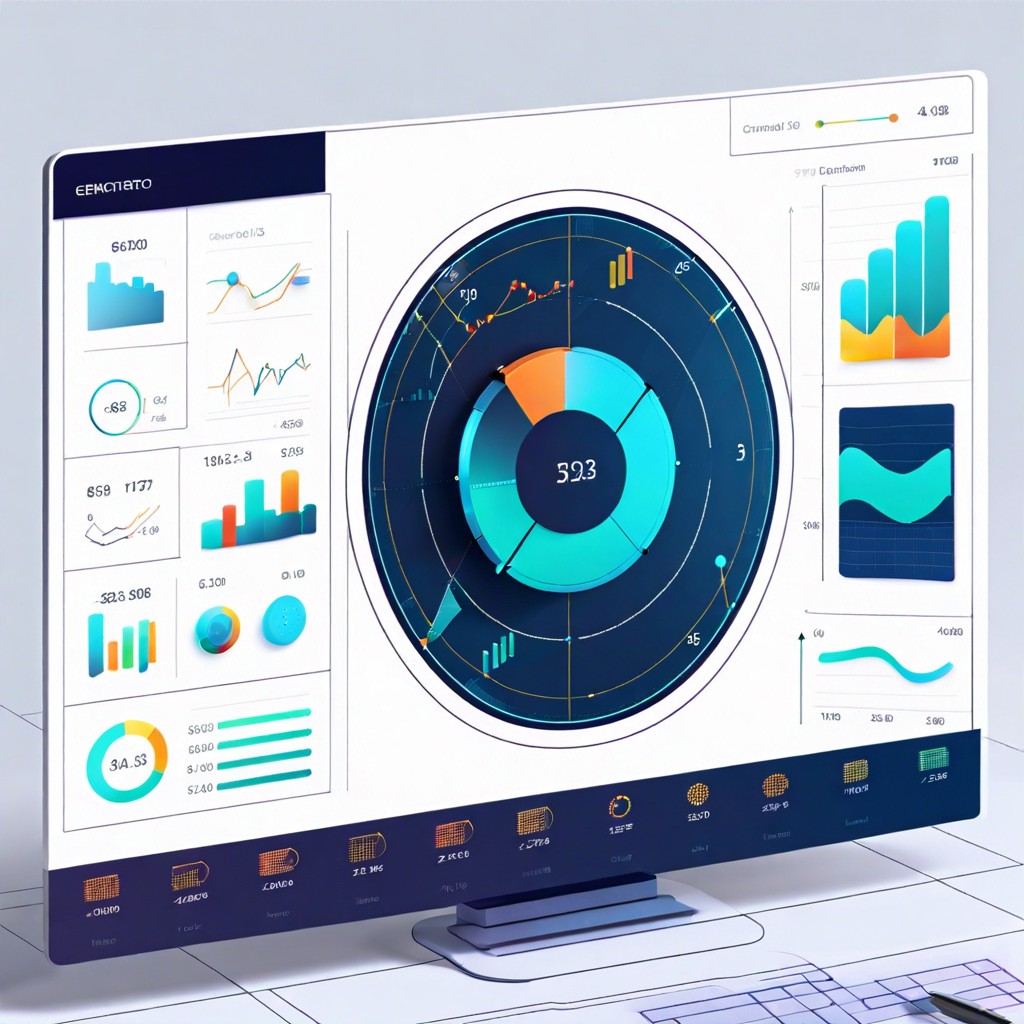Learn how to use TradingView for your trading needs with this step-by-step tutorial.
Key takeaways:
- Customize TradingView’s interface for optimal trading experience.
- Choose and customize chart types and timeframes.
- Add and adjust indicators to enhance analysis.
- Set personalized alerts based on specific conditions.
- Utilize Pine Script to create custom indicators and strategies.
Main Interface Overview

The first thing you’ll notice is the sidebar on the left. This is your toolkit. It includes drawing tools, shapes, and text options—basically, all the fun stuff to make your charts look like a beautifully annotated piece of art.
At the top, you’ve got the main toolbar. This controls the chart’s timeframe, layout, and symbol search. Essentially, it’s the command center for your trading spaceship.
Don’t miss the right sidebar. This is where you’ll find your watchlist, alerts, and ideas stream. Think of it as your trading assistant, keeping everything you need just a click away.
Lastly, the bottom panel. Here you’ll discover Pine Script, TradingView’s proprietary scripting language. It’s a playground for coders and those who want to customize indicators and strategies.
Remember, these panels and toolbars are customizable. Feel free to drag, drop, and organize them however you like. This way, you can create a workspace that makes you feel like a trading wizard.
Setting Up Charts
Alright, once you’re in the main interface, it’s time to spice things up with your charts. Think of this as customizing your car’s dashboard – you want everything where you need it, and perhaps a fuzzy dice for flair.
First, select the type of chart you prefer: candlestick, bar, line, whatever suits your style. You can find this option in the top panel.
Next, adjust the time frame. You can toggle between anything from one second to a month. Short-term traders might enjoy the adrenaline of one-minute charts, while long-term investors might opt for the zen of monthly charts.
To tweak the appearance, head to the settings by clicking the gear icon. You can change colors, the background grid, and even add a watermark if you want to feel like a boss.
Want more than one chart on your screen? Use the “Layout” button to split your view into multiple charts. This can make you feel like you’re running a mission control center, without the existential dread.
Finally, save your masterpiece. Use the “Save” button at the top to store your layout. Now, you’re not just trading – you’re doing it in style.
Adding and Using Indicators
To level up your TradingView experience, indicators are where the magic happens. Want to add indicators? Piece of cake.
Head over to the toolbar at the top of the chart. Click on Indicators. It’s like opening a treasure chest, but instead of gold, you get moving averages, Bollinger Bands, and RSI.
Not sure where to start? Here are some popular picks:
- Moving Average: Smooths out your price data to spot trends.
- Relative Strength Index (RSI): Measures speed and change of price movements. Great for identifying overbought or oversold conditions.
- Bollinger Bands: Creates a visual boundary around price action to spot volatility.
Once you choose an indicator, it will magically appear on your chart. You can adjust settings like periods and sources to tweak them to your liking. Feel free to experiment; your chart won’t bite.
Adding multiple indicators? No problem. TradingView can handle it. Your chart might start to look like a Picasso painting, but that’s part of the fun.
Creating Alerts
To kick off alert management, start by clicking the alarm clock icon on the right-hand toolbar. Think of this as your financial wake-up call, minus the bad coffee breath.
Alerts can be customized based on price movement, indicators, or even drawing tools. So, if you’re waiting for a stock to break through a resistance level, you won’t miss the party.
Select the asset you’re interested in. Next, set your conditions. Want an alert when Bitcoin hits $50,000? Easy-peasy. Pick your condition, be it crossing, moving up, or simply ‘greater than.’ You’re in control.
Choose the method for receiving alerts. Are you a traditionalist with email, or do you prefer a push notification to your mobile? Either way, you got options.
Set an expiration time for the alert, because no one likes getting alerts for last season’s trends.
With these simple steps, you’ve got yourself an alert system that works even when you’re catching Z’s or binge-watching your favorite series.
Scripting With Pine Script
Pine Script is like having a personal assistant for your trading charts, minus the coffee runs. It’s TradingView’s built-in language designed to create custom indicators and strategies. Think of it as the secret sauce for your trading setup.
First, open the Pine Editor at the bottom of your TradingView dashboard. This is where the magic happens. Start simple, like calculating a moving average. Write a few lines of code, hit ‘Add to Chart,’ and voilà, you’ve got a custom indicator.
If you ever wondered what makes that fancy RSI strategy tick, Pine Script lets you peek under the hood. Modify existing scripts or write your own to suit your unique trading style. It’s like customizing a pizza, but with way fewer calories.
Don’t worry if you’re not a coding wizard. TradingView provides ample documentation and examples to get you started. Experiment, tweak, test. Soon enough, you’ll be scripting like a pro. Now go, and make those charts your own personal playground!